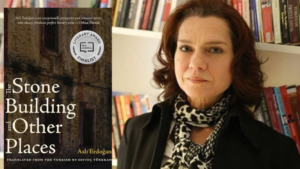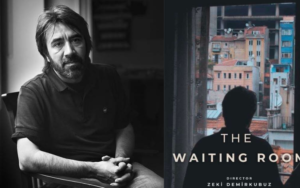Book & Film Review
This week, we embark on an intriguing journey into the impactful work of writer Aslı Erdoğan and director Zeki Demirkubuz.
Aslı Erdoğan – The Stone Building and Other Places
Contemporary Turkish writer and journalist Aslı Erdoğan’s short story collection “The Stone Building and Other Places”, which won Turkey’s prestigious short story awards in 2010, was also translated into English in 2017. The author’s previous novel, The Red Cloaked City, was also translated into English.
Erdoğan, who is best known in the world press for being a journalist and human rights defender, also won the Deutsche Welle’s Best Story Award. The Stone Building and Other Places is a good collection of seven impressive stories, including the DW Award-winning story The Wooden Birds.
The Stone Building and Other Places stands out among Erdoğan’s literature with its deep introspections, sound psychological analysis, and vivid descriptions of space.
Erdoğan, who has an easy-to-read yet impressive language, tells about people who are left out of society and trying to cope with the heavy burden of the past in the short stories in the book.

The writer and her book cover
By presenting the psychological descriptions of these people together with the description of the place they are in, she uses the place itself as a character.
Among Erdoğan’s places, sometimes the crowded streets of Istanbul and sometimes a stone building that gives its name to the book are depicted. Thanks to the author’s admirable narration, the image of the place appears clearly in the reader’s eyes.
The problems that characters try to deal with in stories can sometimes be quite heavy and hard-hitting. Despite this, even in the most hopeless situations in the darkest place, the writer leaves an open door to hope.
Erdoğan shows special sensitivity to women in his stories. The female characters in their stories appear as carriers of a wound. The author tells us about them with a kind of compassion.
Despite the difficulties they face, the characters do not lose their desire to connect with life. The author invites the reader to reflect on the enduring power of hope even in discouraging situations.
The characters in our stories sometimes appear as refugees, sometimes as prisoners or patients. The description of the foreign lands, prisons or clinics they are in paints a picture of captivity. The hopes our characters have for the future appear as a representation of the search for freedom.
Zeki Demirkubuz – The Waiting Room
Zeki Demirkubuz, who stands out among Turkish directors by creating his own cinema language with his minimalist narrative style, shoots films that focus on the problems brought by existence.
With his 2003 film The Waiting Room, Demirkubuz created a thought-provoking narrative that dives the audience into the depths of human emotions and existential troubles.film
The film takes place in an ordinary waiting room where two strangers are waiting for an uncertain event. The tension slowly builds as the minutes pass, and the characters’ interactions create a reflection of the human experience.

The Director and the movie poster
Demirkubuz masterfully captures this atmosphere of congestion, where the enclosed space of the waiting room functions as both a physical and metaphorical space of containment.
The power of the film lies in the fact that it constantly makes you feel anxious. This anxiety is captured in the film through intentional moments of silence created between dialogues.
The boredom of waiting is successfully conveyed to the audience through short, tense dialogues and moments of silence. When viewed internally, these moments of silence add layers to the story. They allow the characters’ moods to be felt better. It also gives the audience the opportunity to reflect on their own interpretations of the characters and situations.
As the story progresses, The Waiting Room delves into deep philosophical and existential questions. It encourages viewers to reflect on the nature of human existence, the burden of waiting, and the choices we make when faced with uncertainty.
The film has an open-ended, unclear ending. This invites the viewer to comment and discuss the film; it leaves a lasting impression on the viewer.
Although the director’s style appeals to me personally, I must admit that the film can be challenging for viewers who are accustomed to or love the classic film language. Its slow pace, deliberate moments of uncertainty and silence, and an unclear finale can be seen as negative aspects for those looking for a more traditional narrative.
However, the movie offers a good experience for the viewer who likes to be a part of a movie intellectually and wander through the labyrinths of existential questions while watching it.
